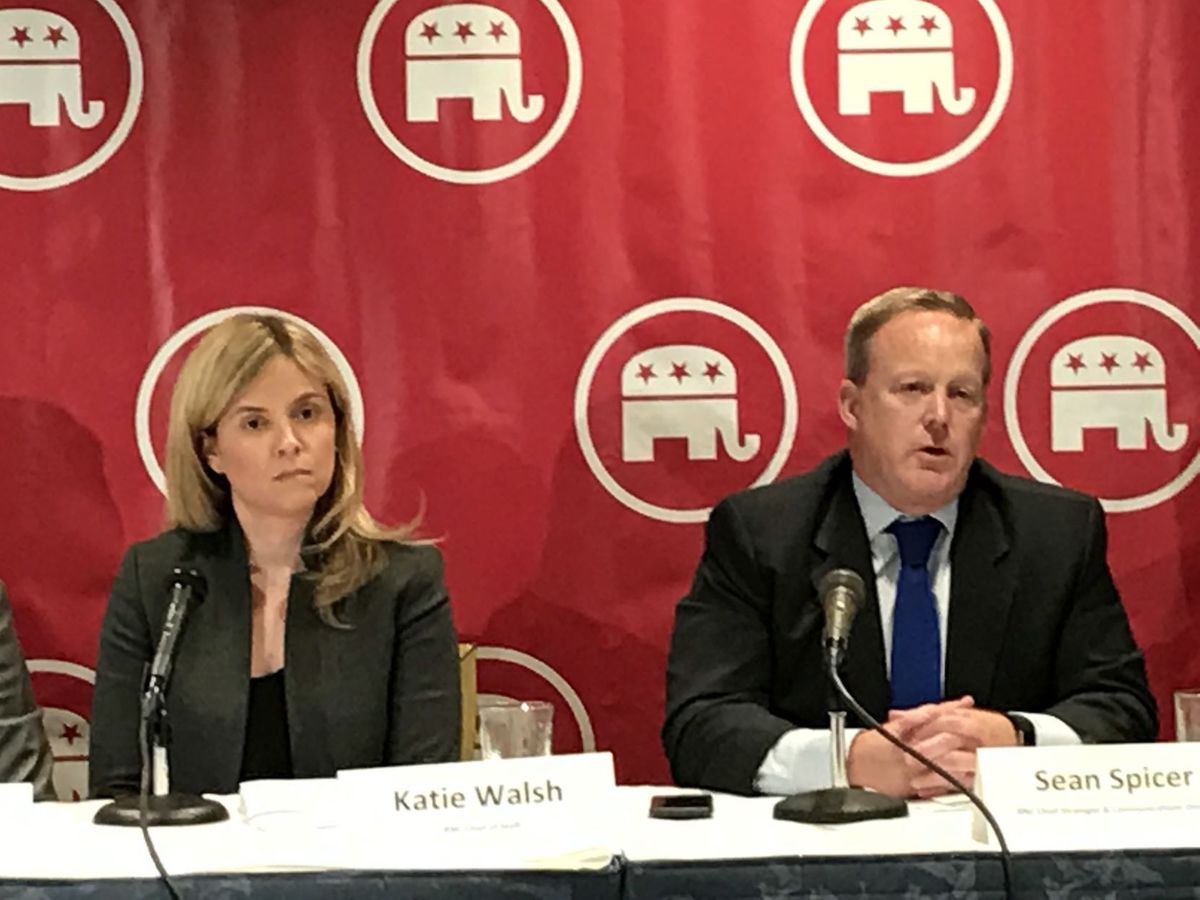By Chuck Raasch
St. Louis Post-Dispatch
WWR Article Summary (tl;dr) Meet 32-year old Katie Walsh, the St. Louis native who played a key role in helping the RNC build an infrastructure that Trump used to decisively win the Electoral College.
WASHINGTON
One of the top behind-the-scenes players in Donald Trump’s victory last week is a 32-year-old St. Louis native, Katie Walsh, who as chief of staff of the Republican National Committee presided over what RNC officials said was an unprecedented $175 million effort to target and motivate voters in swing states.
Walsh has been described as the GOP’s “rainmaker” for her fundraising prowess. Shortly after she was named chief of staff by RNC Chair Reince Priebus last year, The Washington Post put her on its list of 40 most interesting women in politics. She had previously been finance director at the RNC.
Her role in helping the RNC build an infrastructure that Trump used to decisively win the Electoral College was fully revealed Monday, when the RNC briefed reporters on its voter-turnout operations.
Walsh got her first exposure in politics as a high school intern for the 2000 campaign of Sen. John Ashcroft, who lost but later became attorney general under President George W. Bush.
Walsh volunteered for Republican Matt Blunt’s 2004 successful gubernatorial campaign, then worked for the Sen. Fred Thompson’s Republican presidential campaign in 2008. She is a finance and marketing graduate of George Washington University.
As chief of staff, essentially the woman who makes the trains run on time and the money get raised and sent to the best places, she has developed a reputation as a campaign finance expert.
RNC Communications Director Sean Spicer, who once described Walsh as a top-notch leader in largely an “old man’s world,” said Monday that Walsh was a key player.
On Monday, top party communications and data-crunching officials, including Walsh, briefed reporters on the RNC’s vote-targeting operation, which Spicer described as a “permanent ground game.”
The party built a databank of 198 million voters, continuously rating their likelihood of voting and their party and candidate preferences. From there, party and campaign officials were able to build state-based turnout models. Missouri was briefly in the national GOP’s sights but had been moved off swing-state status the month before Election Day.
RNC data adviser Bill Skelly said that the party estimated that 135,824,656 people would vote nationally. Vote counts are still going on and approaching about 128 million, and in key swing states, like Florida, the GOP turnout model was off only small percentage points, he said.
The RNC used that data, which included not only names but likely preferences on issues, to target 40,000 to 60,000 daily Facebook messages to voters likely to support Trump and down-ballot Republicans, spending $200,000 to $300,000 daily on these highly specialized messages, party officials said.
RNC volunteers and staff knocked on 24 million doors, twice the total of 2012, party officials claimed. The RNC spent $12 million updating its voter email lists.
“It was our job, in our estimate, to deliver every piece of data we possibly could,” Walsh said. “At the end of the day, the campaign is going to run the campaign they want to run, and they obviously made some very good decisions” based on the data.
Spicer said that the RNC went from being beaten twice by President Barack Obama’s campaign infrastructure, which used many of the same data-mining tactics, to one that “truly understands who is voting and how they are voting. So it is not just knocking on the door, it is knocking on the right door.”
Democrats have not talked much about what went wrong with their data and voter-outreach efforts. In a widely reported telephone call with voters over the weekend, presidential nominee Hillary Clinton said that FBI Director James Comey’s announcement that the FBI was reopening its investigation of Clinton’s use of a private email server while secretary of state, and his announcement four days before the election that the investigation was again closed, blunted her momentum.
Spicer said it was one of many factors roiling voters in swing states in the final days of the 2016 campaign.
He said the RNC’s data operation was not built for a specific candidate, but for whomever would emerge as the party’s nominee, and that with Walsh’s guidance, it also became a crucial fundraising platform.
Spicer said the decisions that “Katie and Reince (Priebus) made over the last four years to get us where we are now … gave us the confidence going into Election Day that we really had the momentum on our side.”
RNC officials said they had Missouri among nine presidential swing states in September, but removed it by October, confident Trump would win.
But Clinton’s Democratic presidential campaign, convinced it was doing well enough in other swing states to spare money elsewhere, announced in October it would spend $500,000 in Missouri. Clinton ended up losing the state by more than 500,000 votes, 19 percentage points.
Walsh said Missouri and other states, like Michigan, that were on and off maps of the most competitive states were testament to the fluidity of voters this year.
“I think (Clinton’s campaign) felt Missouri was more competitive than it was,” Walsh said. But “just because we didn’t have it within three (percentage points in polls) didn’t mean we didn’t think it was a fluid state.
“I think you saw from October to November a ton of states that were” off and on the map of swing states, Walsh said.
“Michigan (where Trump has a narrow lead, pending a recount) hasn’t been on our map for, you know, 13 years,” she said.
Back when Walsh was just out of high school.














































































































































































































































































































































































